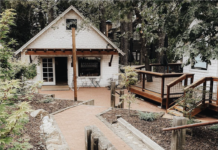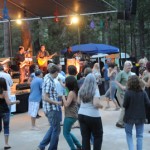So, as we all pursue the ever-compelling joys and rewards of removing all flammable materials from the 30-foot zone around our homes and structures, giving us all satisfaction in knowing we are keeping the carpets of pine needles and burgeoning waving seas of grass from providing ground fuels for any and all potential falling embers, there is something else we can all be doing.
Spring brings the beginning of the emergence of the adult Goldspotted oak borers from the thick-barked black oak trees. The 1/16 of an inch distinctive capital D-shaped holes in the bark of the trunk and lower large branches tell us the tiny GSOB beetles are living in our most majestic old oaks.
You can help scientists still on the cutting edge of research to collect data contributing to the possibilities of learning how to control and, perhaps, stop the growing infestation and death of oaks as it spreads across our forests. As you work in your yard, examine the oaks closely.
Are there a few of these D-shaped holes? If so, the tree can be treated. There are topical insecticides that kill the emerging egg-laden females before they have a chance to take flight and further infect your own trees, your neighbors’ trees and the trees in our national forest.
Call local arborists to find out what you can do to keep your oaks alive and beautiful through the seasons.
On walks with your friends, raise awareness about the GSOB threat to our forest as you talk about and take note of any oaks that have not leafed out. Look at the leaves. Are they smaller than usual? Are they curled and deformed?
If you suspect any trees are having a problem, please call the GSOB hotline at 951-659-8328 and report the location of the tree. You, as citizen scientists, can make important contributions to the data being reported and collected.
GSOB beetles do not fly far. How, then, did they get here? The most likely case that scientists have found by observation is already-infested oak transported for firewood. Buy your firewood locally.
For more information, attend the Tree Armageddon Symposium from 9 a.m. to noon Saturday, May 27, at the Riverside-Corona Resource Conservation District, 4500 Glenwood Drive, Building F Conference Room in Riverside. For information, visit rcrcd.org, email riverside-sanbernardino.cnps.org or call 951-682-1901.
University of California researchers will present latest findings about spread, controls, and biology of tree pests and the diseases they vector. The event is sponsored by the Riverside-Corona Resource Conservation District and the Riverside-San Bernardino Chapter of California Native Plant Society.









